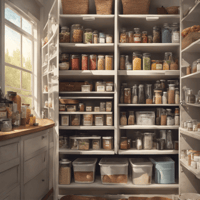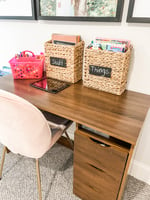Picture this: you open your closet, and instead of chaos staring back, it’s a streamlined haven...
Downsizing Dilemmas: Unpacking and Organizing in Smaller Spaces
Downsizing to a smaller home can be a challenging yet rewarding process. Whether you're moving to a more manageable living space, simplifying your lifestyle, or transitioning to a new chapter in life, the key to a smooth downsizing process lies in maximizing space and maintaining organization. This blog post will provide professional advice on how to effectively unpack and organize when moving into a smaller home, ensuring that you make the most of your new space without sacrificing comfort or style.
- Begin with a Downsizing Plan
Before moving, it's crucial to have a downsizing plan. Assess your new space and decide what is essential. Measure the rooms and consider the layout to determine which pieces of furniture will fit and how you can utilize the space efficiently. Create a detailed inventory of your belongings and categorize them into three groups: keep, donate/sell, and discard. This initial step will not only ease the moving process but also ensure that you're only bringing items that fit comfortably in your new home.
- Utilize Vertical Space
In smaller living spaces, vertical space is your best friend. Consider installing floating shelves, tall bookcases, and hanging storage to keep the floor space uncluttered. Use the back of doors for extra storage with over-the-door organizers for shoes, accessories, or cleaning supplies. Wall-mounted furniture, such as drop-leaf tables or desks, can also save space while providing functionality.
- Invest in Multi-functional Furniture
Furniture that serves multiple purposes is invaluable in a smaller home. Look for beds with built-in storage, sofa beds for guests, and ottomans with storage inside. These pieces allow you to maximize your living area without sacrificing the utility or aesthetics of your home. Additionally, consider downsizing larger furniture pieces that may overwhelm your new space and opt for more compact, versatile options.
- Declutter Regularly
Moving to a smaller space is an excellent opportunity to declutter and simplify your life. However, decluttering shouldn't stop once you've moved in. Regularly assess your belongings and decide if they're still necessary or if they're taking up valuable space. Adopting a minimalist approach can help maintain organization and prevent your smaller home from feeling cramped.
- Use Smart Storage Solutions
Smart storage solutions can dramatically increase the usability of your new, smaller space. Use under-bed storage containers for out-of-season clothing or extra bedding. Opt for storage boxes that can slide out of sight under furniture or in closets. Drawer organizers, vacuum-sealed bags for bulky items, and stackable bins can also help keep your belongings organized and accessible without taking up too much space.
- Keep Surfaces Clear
In smaller homes, it's essential to keep surfaces like countertops, tables, and desks as clear as possible. This not only creates a sense of openness and space but also helps maintain a tidy and organized home. Implement a 'one in, one out' rule to prevent clutter from accumulating and designate specific spots for everyday items to ensure they're easy to find and put away.
- Embrace Digital Solutions
One way to save physical space is by digitizing what you can. Instead of keeping shelves of photo albums, books, or files, consider converting these into digital formats. This can significantly reduce the need for physical storage space and keep your home feeling open and uncluttered.
- Maximize Closet Organization
Closet space is often limited in smaller homes, making efficient organization critical. Use slim, non-slip hangers to maximize hanging space, and consider installing a double hang closet rod to double your hanging area. Shelf dividers, drawer organizers, and shoe racks can also help keep your closet orderly and make the most of every inch of space.
- Create Zones
Even in smaller spaces, it's possible to create distinct zones for different activities. Use rugs, furniture placement, and lighting to define areas within a room for work, relaxation, or dining. This not only helps in organizing your space but also ensures that your home meets all your living needs.
- Be Flexible and Creative
Finally, the key to successfully organizing a smaller home is flexibility and creativity. Be open to rearranging your space, repurposing furniture, and finding new storage solutions as your needs change. Remember, downsizing doesn't mean sacrificing your lifestyle or comfort. With the right strategies, you can create a cozy, organized, and functional home that you love.
Downsizing and moving into a smaller home presents unique organizational challenges, but with careful planning, decluttering, and the use of smart storage solutions, you can maximize your space and maintain a beautifully organized home. Embrace the opportunity to simplify your life, focus on what truly matters, and enjoy the benefits of living in a more manageable space.


